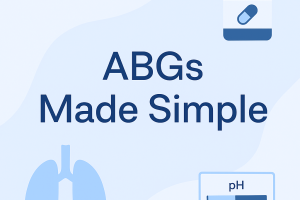The Importance of Checking Blood Pressure Regularly: A Lifesaving Habit

High blood pressure, often called the “silent killer,” can go unnoticed for years while causing significant damage to the body. Regular blood pressure monitoring is a simple yet powerful step toward safeguarding your health. Let’s explore why this habit is critical, how to do it correctly, and what the numbers mean.
Why Is Regular Blood Pressure Monitoring Important?
1. Early Detection of Hypertension
Hypertension (high blood pressure) is a leading risk factor for heart disease, stroke, and kidney failure. Regular monitoring helps detect elevated levels early, even if symptoms are absent.
2. Tracking Treatment Effectiveness
For individuals already diagnosed with hypertension, frequent checks allow healthcare providers to assess the effectiveness of medications and lifestyle changes.
3. Identifying Trends
Blood pressure fluctuates throughout the day due to factors like stress, activity, and diet. Regular checks help identify patterns, providing valuable insights for your healthcare team.
4. Preventing Complications
By keeping tabs on your blood pressure, you can prevent complications like heart attacks, strokes, and aneurysms by taking timely action when readings are elevated.
How to Check Blood Pressure Correctly
1. Choose the Right Equipment
- Use an automatic blood pressure monitor for convenience and accuracy.
- Ensure the cuff fits properly and is placed around the upper arm.
2. Prepare Properly
- Avoid caffeine, smoking, or exercise at least 30 minutes before measurement.
- Sit comfortably with your back supported and feet flat on the ground.
3. Measure at the Right Time
- Check at the same time each day, preferably in the morning and evening.
- Take multiple readings a minute apart and calculate the average.
4. Record Your Readings
- Maintain a log of your results, including the time and any relevant notes about your activity or diet.
Understanding Blood Pressure Numbers
Blood pressure is recorded as two numbers:
- Systolic Pressure (top number): Pressure in your arteries when your heart beats.
- Diastolic Pressure (bottom number): Pressure in your arteries when your heart rests between beats.
Here’s a quick reference for blood pressure categories:
- Normal: Less than 120/80 mmHg
- Elevated: 120-129/<80 mmHg
- Hypertension Stage 1: 130-139/80-89 mmHg
- Hypertension Stage 2: 140+/90+ mmHg
- Hypertensive Crisis: Higher than 180/120 mmHg (seek emergency care immediately)
Tips to Maintain Healthy Blood Pressure
- Adopt a Heart-Healthy Diet
- Eat plenty of fruits, vegetables, whole grains, and lean proteins.
- Reduce salt intake to less than 2,300 mg per day.
- Exercise Regularly
- Aim for at least 150 minutes of moderate-intensity exercise per week.
- Manage Stress
- Practice relaxation techniques like deep breathing, yoga, or meditation.
- Limit Alcohol and Avoid Tobacco
- Consume alcohol in moderation and avoid smoking altogether.
When to Seek Medical Attention
Contact a healthcare provider if:
- Your readings are consistently higher than 140/90 mmHg.
- You experience symptoms like severe headache, chest pain, shortness of breath, or visual disturbances.
Conclusion
Monitoring your blood pressure regularly is a small habit that yields significant health benefits. It empowers you to take control of your cardiovascular health and work with your healthcare provider to prevent complications.
Start today—your heart will thank you!
What are your thoughts on regular blood pressure checks? Let us know in the comments below!






